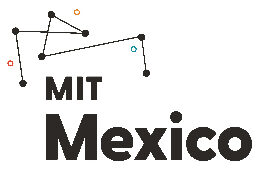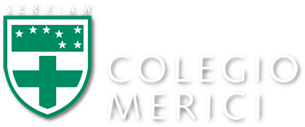In design thinking, students combine content with the creative and critical thinking skills necessary to create products and systems that solve all sorts of problems. Schools should be the place where students consider current technologies and the development of future ones as well. As a process and a way of problem solving, design thinking expands the way students experience content. In so doing, a critical evaluation of past and present designs develops discriminating thinkers who both apply academic and creative skill while learning to innovate.
In the minds of students innovation resides in the future, but for now, let’s enter through the past. Consider the toothbrush. The toothbrush is a great idea, but where did it come from? The toothbrush is ubiquitous and has been around for hundreds of years. Evidently some innovator(s) in ancient Egypt and later in 15th century China invented solutions to the age-old problem of dirty teeth. I have two toothbrushes I am fond of – the one I use and the one that sits on my bookcase at home. The latter is an 18th century toothbrush made from animal bone and pig bristles that I found while conducting an archeological dig. However distasteful the idea, pig bristles on the 18th century model demonstrate just how adaptable materials are in meeting people’s needs. Who thought of such a thing?
Could students in one of our classrooms today create the modern equivalent of the toothbrush? By that I mean, could the students in today’s world step into the generative process that produces a new and lasting technology for the future? In many classrooms, the answer is unfortunately, “No.” Fortunately, that is not the case at Colegio Merici.
Cultivating Creative Classroom Clouds of Ideas
How do we start the design process? Research informs us that innovation arises in “clouds” of disparate thoughts and neural connections in the brain. Real rain clouds are a good analogy because they are accumulations of molecules filled with kinetic motion and prone to turbulence and tremendous bursts of energy. Figurative clouds of thought provide the place and conditions that allow ideas to coalesce, to spark and to pour forth.
Schools should be the place where students consider current technologies and the development of future ones as well.
At many schools and for many students, education has become the ultimate anti-cloud experience. At many schools, we separate content, tell students what to think, reduce learning to chapters in a book, distance learners from problem solving, fill time, reduce collaboration and resist the energy and novelty of our student’s ideas. We never allow students’ mental “clouds” to develop into storms of ideas. That is a serious problem.
Cloud thinking actually changes the brain. Michael Merzenich at the University of California, San Francisco studied the brains of primates struggling to solve a problem. Over time, Merzenich discovered that the struggle to solve problems actually increased the size of the performance areas of the primates’ brain. It turns out, innovation is physiological. Problem solving and design thinking changes the brain!
Imagine a classroom full of students solving a particularly challenging problem. Imagine the expanding cognitive neural networks of a student’s brain and how that neural change begets additional skill and ability which forms even more neural connections. What you are imagining is what is happening at Colegio Merici at all grade levels. Teachers are finding the best challenges and problems for students to solve in order to link content with authenticity, experience, and meaning.
Could the students in today’s world step into the generative process that produces a new and lasting technology for the future? In many classrooms, the answer is unfortunately, “No.” Fortunately, that is not the case at Colegio Merici.
Classroom experiences centered around problem-based learning and design thinking can amplify the energy between separate brains and very different “clouds” of thought. The half-baked idea that is partially and maybe even sloppily formed in one brain may find affinity, connection, and conclusion in another person’s cloud of ideas. This is what makes innovation so powerful. Problem-based learning is collective, collaborative, and creative.
Innovation is also an accretive process. The toothbrush was not invented by one person rather by the creative potential of many people over hundreds of years. While we hold tight to our toothbrush, it is hard to imagine the storm of ideas it took to design this one simple implement. The toothbrush was designed in an innovative moment when a unified idea emerged fresh from a constellation of smaller insights. As educators, it is our job to understand the brain as well as the processes that lead to novel ideas. What we know about the brain informs classroom instruction.
Brains at Rest
Our brains are working even at rest. Marcus Raichle a neurologist at Washington University, decided to analyze Magnetic Resonance Imaging (MRI) data on students performing a difficult puzzle. Rather than focus on the brain while active, Raichle focused on the brain during inactivity. While the students were at rest, their brains were anything but still. Raichle says, “When your brain is supposedly doing nothing, it’s really doing a tremendous amount.” During down times our brain explores the inner database of all the experiences and ideas that have recently arrived. This process makes connections and blends the seemingly dissonant parts. The research that Raichle presented is deeply meaningful. It appears that the landscape of creativity is even bigger than we imagined. Creativity is happening even during rest! The implications for the classroom are clear. Rest, sleep, and deliberate pauses are important elements of learning.
While students may welcome more time to sleep, Raichle’s work directs teachers to other important opportunities for shaping the mind of students and enriching their creative “clouds”.
- First, we need to provide rich memorable content in an interesting and engaging format so that the material sticks around in the brain long enough to be incorporated.
- Secondly, collaborative problems and challenges must be provided so that the brain connects ideas and ponders various solutions.
- Lastly, unstructured thinking time has to be provided where the brain can ponder and boost connections.
At Merici, Creating the next great idea is just one student away. As teachers of younger students create moments of problem-based learning and collaborative design, those younger students develop into older students who are able to apply the requisite academic acumen, advanced technologies and empathic mindset that can truly solve problems, change lives …. and brains!









